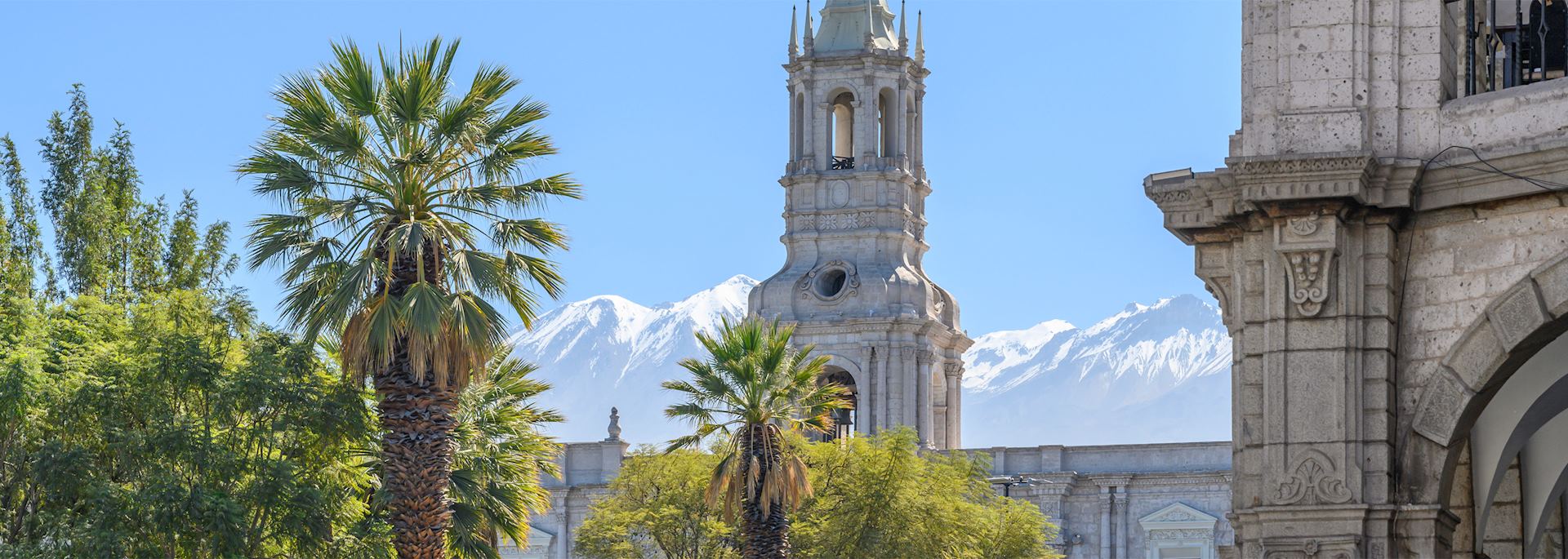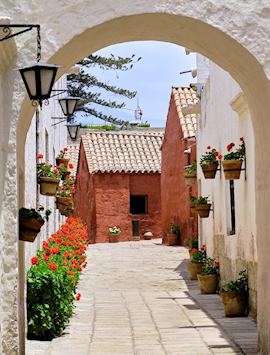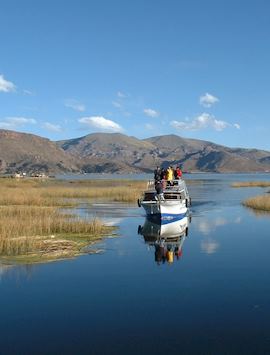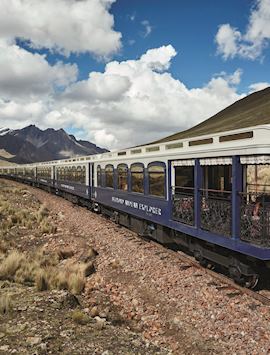By Peru specialist Fathom
The lure of Arequipa draws me back time and time again. Its white buildings, crafted from volcanic stone, sit in the shadow of the active El Misti. I love exploring the plazas scattered between the Spanish-colonial architecture, sampling its blossoming food scene and sipping a pisco sour beneath the pink evening sky.
Most visitors hardly scratch the city’s surface, using Arequipa as a stepping stone en route to Colca Canyon. But, whether you’re an adventure seeker, on the hunt for Latin America’s best ceviche or curious to see an Incan mummy frozen in time, you can always find an excuse to linger longer in Arequipa.
On a classic journey around Peru, visitors usually spend two nights in Arequipa before heading up to Colca Canyon. Despite the town’s seemingly high altitude of 2,332 m (7,651 ft) above sea level, it’s actually one of the lowest points on a Peru trip, so is often used as a stop for people to acclimatize.
Why extend your stay in Arequipa?
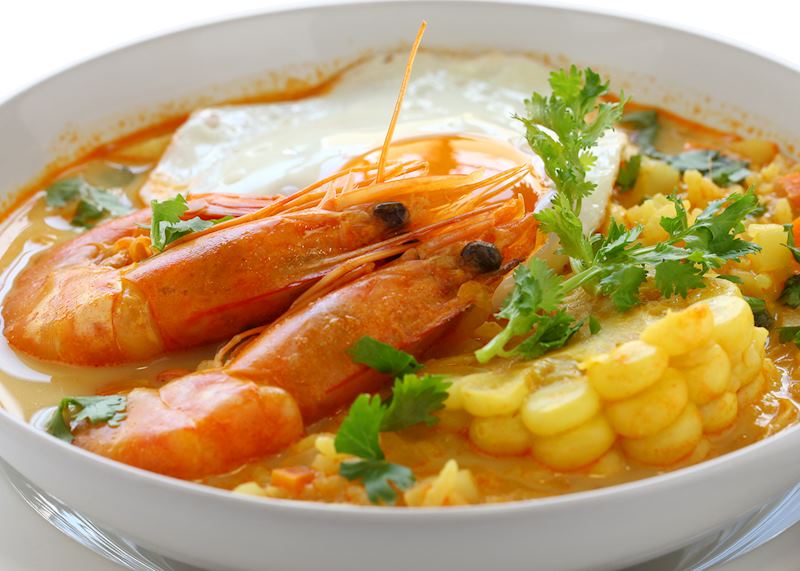
Arequipa’s food scene
If you’re someone who enjoys good food, that’s a good enough reason alone to extend your stay in the city. Its up-and-coming food scene has placed it in serious contention with Lima for food capital of southern Peru. Some of Peru’s signature dishes, such as chupe de camarones (Peruvian shrimp chowder) and rocoto relleno (stuffed peppers) were born in Arequipa.
By staying an extra night, you can try more of the gourmet restaurants on offer or sample the city’s highlights on a food tour. From La Queseria’s cheese-smothered, Italian-style wood-fired pizzas to Chicha’s gourmet offerings of refined regional ingredient such as river shrimps and rocoto peppers, you’ll be spoilt for choice.
One of my preferred spots is a Peruvian-Andean-Alpine fusion restaurant called Zig Zag. If you’re into steaks, this is the place to go. Tucked away on a side street, its speciality is its volcanic-stone-cooked meats and fish.
Outdoor adventures
Cradled by three towering volcanoes and with the Rio Chili flowing through, Arequipa is an outdoor adventure playground. You can ride the river’s rapids, mountain bike down the side of a volcano or follow some of the many hiking routes that wind through the surrounding countryside with a guide.
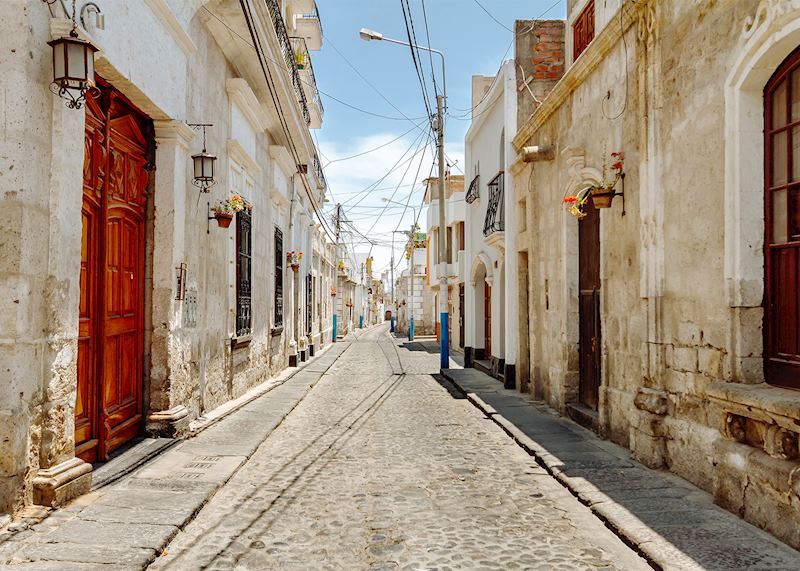
Exploring Arequipa’s side streets
If venturing onto the side of a volcano isn’t your cup of tea, you can easily while away an afternoon strolling the city streets or learning about its history. The main square, the Plaza de Armas, is a good starting point. Surrounded by modern city life, the square is a well-preserved time capsule showcasing the white sillar (volcanic rock) architecture, grand colonnaded balconies and the 17th-century Basilica Cathedral of Arequipa.
From the square, I suggest exploring the city’s backstreets to get an insight into city life. It won’t be long before you inevitably find yourself in the middle of an ornate square decorated with a small church or browsing a handicraft market.
A bit about Arequipa
The city is best known for being the birthplace of one of Latin America’s most influential novelists, Mario Vargas Llosa, and for housing the ice-preserved Incan mummy, Juanita.
The White City
There’s some dispute around the origins of the city’s name — some believe that the Aymara were the first to inhabit the area and named the site Ari (‘summit’) Quipa (‘lies beyond’). Another version is that Incas decided to settle due to the fertile soils and tactical location between Cuzco and the sea, with their emperor exclaiming ‘Ari qhipay’ (‘let’s stay here’).
Either way, when the Spanish arrived in the 16th century, they liked the name and built a city out of the abundant, weatherproof volcanic stone, sillar. This white stone lead to Arequipa’s nickname of Ciudad Blanca, ‘the White City’.
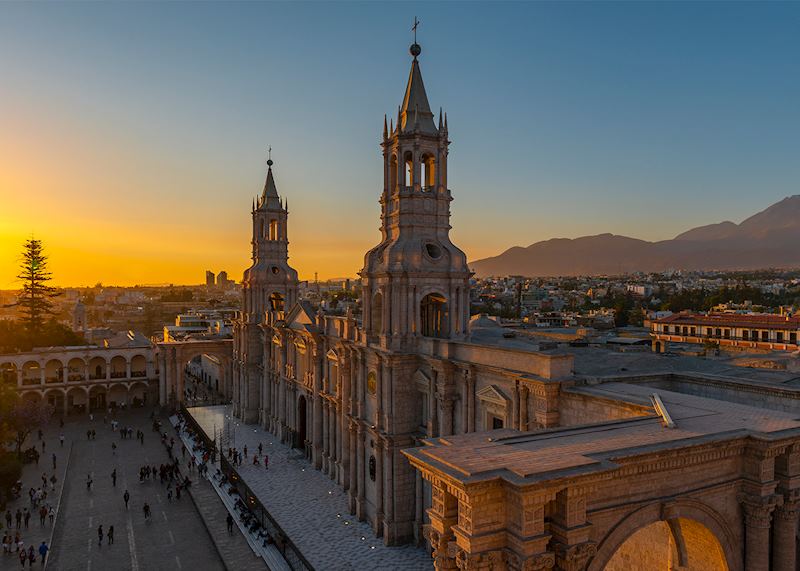
What sets Arequipa apart?
For me, it’s having the ability to delve into the local culture. The city revels in its laid-back atmosphere and relatively crowd-free streets, compared to other Peruvian cities. You can easily navigate the city on foot, with plenty of opportunities to slip away from the busier spots and explore the European-style buildings or quietly enjoy a coffee in the shade.
Also, on every evening I’ve spent in the city I’ve enjoyed watching its revered pink sunset. To make the most out of this spectacle, I urge you to spend at least one evening at a rooftop bar, nestled under a blanket (as the evening temperature drops dramatically) to watch as the surrounding volcanoes are silhouetted against shades of pink, all while sipping a pisco sour — my tipple of choice.
Things to do in Arequipa
Visit Santa Catalina Convent
This 16th-century building is hard to miss, standing like a fortress within the city. I retrace my steps here on every visit to Arequipa. The place is so well preserved, you can see where the nuns lived and some of their clothing, making it easy to imagine their way of life. It felt like I’d been transported back in time.
I recommend using a guide to help you navigate between the monastery’s brightly painted red-and-blue cloisters and large frescoes, as it’s easy to get lost. You’ll also learn about how the life of the nuns has evolved and adapted over time, while still living a very cloistered life.
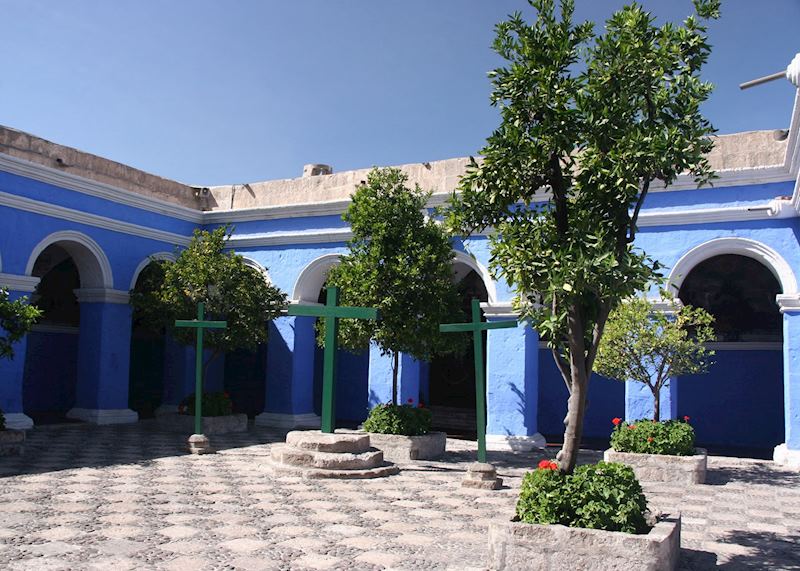
See the Incan mummy, Juanita
One of the best-preserved mummies in the world, Juanita was found on Mount Ampato, northwest from El Misti. It’s believed this young girl was sacrificed as an offering to the Incan gods sometime between 1450 and 1480. She was discovered in full ceremonial dress in 1995 by an explorer.
You can visit her in the Museo Santuarios Andinos, not far from the Plaza de Armas. I found it interesting to see how well the mummy had been preserved due to the freezing temperatures at high altitude.
Take a guided walking tour of the city
Due to its compact layout, you can easily explore the city on foot. As you meander past the Spanish-colonial architecture with your guide, you’ll hear about the city’s history and how the buildings are designed to withstand earthquakes. Most tours will include a visit to the monastery and the palm-fringed Plaza de Armas.
Before you set off, your guide will spend some time finding out about your interests. My passion is food, so my guide took me to a vast indoor market just off the main square. As soon as I walked in my senses were heightened. The room was a flurry of activity: sellers fighting for attention, butchers preparing meat and people jostling for position between the stalls.
The market is neatly divided into sections, with all the produce neatly laid out. Tempting smells lure you to reach in and grab a chirimoya (a tropical fruit with thin green skin and pulpy flesh) or a fresh loaf of traditional bread. After exploring, we sat and had a juice while chatting to the stall owner about her daily life in Arequipa and how her stall had been passed down through generations of her family.
Your next stop, Colca Canyon
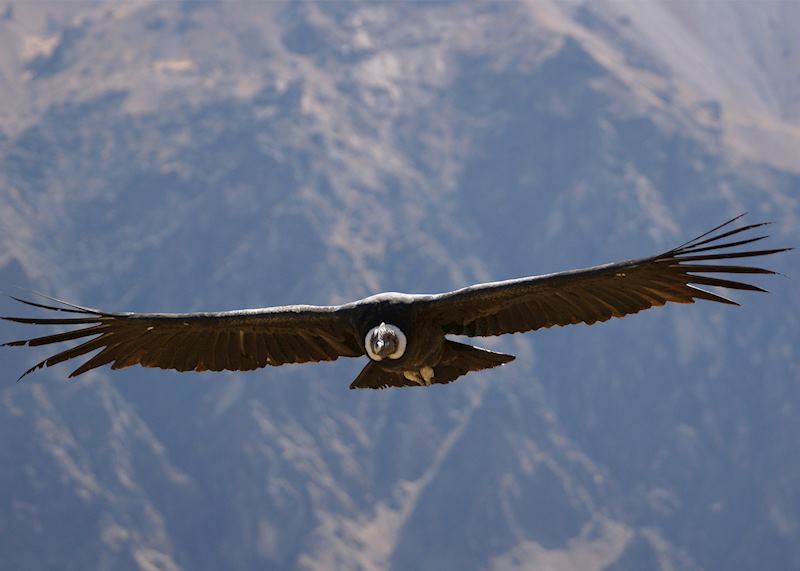
Peru’s version of the Grand Canyon, Colca Canyon is one of the deepest in the world, plunging 3,270 m (10,730 ft). While it shelters a revolving cast of llamas and vicuñas, the canyon’s posterchild is the condor.
As you’re driven to Colca Canyon, the city’s buildings flick by and are quickly replaced by remote plains occupied by herds of grazing llamas. I was so absorbed in watching the changing landscape that the four-hour journey soon slipped by.
Condor’s Cross
If you’re aiming to spot condors during your visit, your best chance is at Condor’s Cross in the early hours of the morning. Situated on one of the steepest sides of the canyon, Condor’s Cross is surrounded by forested slopes where the birds nest. I was captivated watching the birds take off and hover above the canyon top searching for food, using their 3 m (9.8 ft) wingspan to glide in the air currents.
I recommend visiting Condor’s Cross with a private guide — it meant that I got to travel at a much more leisurely pace, stopping at towns and villages along the way. After spending some time at Condor’s Cross Lookout, we had lunch in a tiny local restaurant that served a few Andean dishes, I opted for a hearty translucent broth with quinoa and carrots.
There are also plenty of opportunities to extend your stay around the canyon. If you’re a keen hiker, you could explore some of the guided and self-guided hiking trails. Alternatively, view the barren landscape from the saddle of a horse or a mountain bike, or visit some of the pre-Inca ruins in the area.
When should I visit Arequipa and Colca Canyon?
One of the reasons the Spanish fell in love with Arequipa is due to its year-round spring-like climate, which has unofficially earned it the nickname ‘The City of Eternal Spring’. That said, I suggest visiting outside of January through March as it can be slightly rainier. Rain’s likely in Colca Canyon between December and March, but the temperature hovers consistently around 18°C (64°F) throughout the year.
Read more about trips to Peru
Start thinking about your experience. These itineraries are simply suggestions for how you could enjoy some of the same experiences as our specialists. They're just for inspiration, because your trip will be created around your particular tastes.
View All Tours in Peru